Helping clinic staff & providers manage and complete telehealth appointments
Ascension Video Chat
Role: Designer, collaborating with a team of researchers, product and engineers. Built using Ascension's Helix design system.
Skills Used: UX Design, Blueprinting, Mixed Methods Research
In 2021, 80.5% of providers offered telehealth services— an increase from 16% in 2019.
As a response to the surge in telehealth during the COVID years, Ascension Studio built their own HIPAA-compliant, homegrown version of a light-weight video chat app in 2021 that allowed offices to create rooms, send out links and allow providers and patients to hop into a call together.
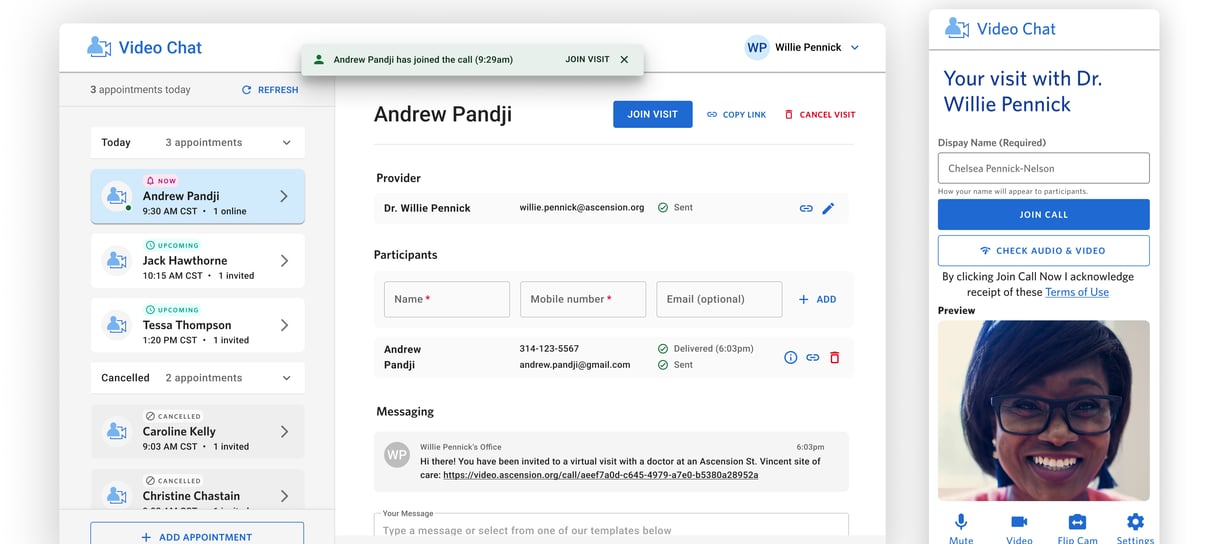

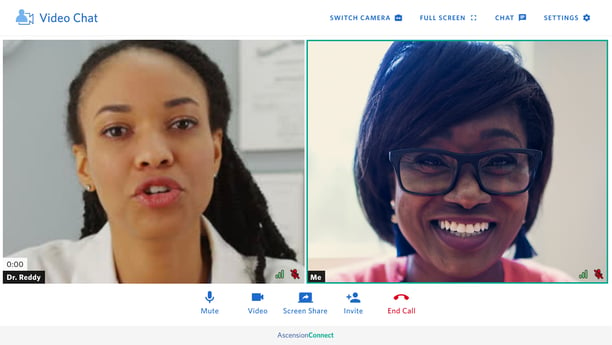

We worked on a next iteration of Video Chat that help our clinicians better create, manage and complete their telehealth visits.
1 — Our clinical staff users were the primary user, creating appointments and managing patient communications.
2— They communicate with providers over Athena Chat. Providers do not directly sign into video chat but prefer joining with just a link.
3— Clinical staff wanted tools that would allow them to better see upcoming vs. cancelled appointments, send unique links to providers and send templated messages to patients.
First, we created a user journey map which helped us understand key clinical workflows.
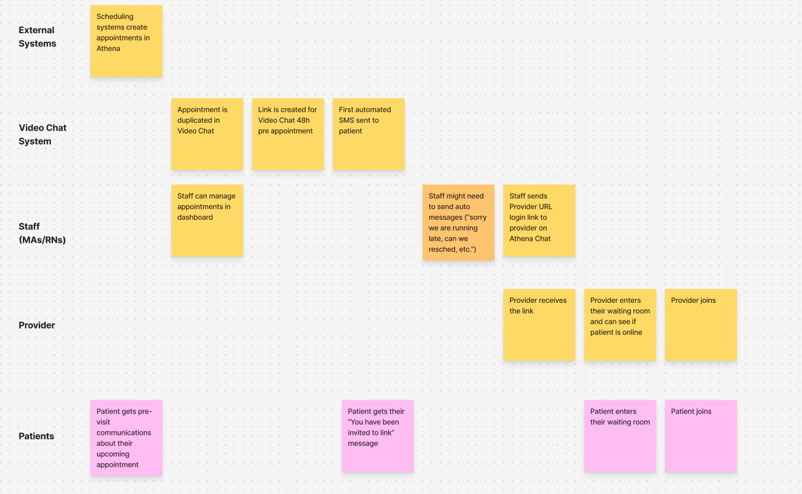

We worked with one of our clinics in Jacksonville to understand key clinical workflows when it comes to using Ascension Video Chat.
We then visualized it in various service blueprints, built understanding around the key actions of the different users and considered data flow — all this to help staff manage and complete telehealth appointments.
We then evaluated the current version of Video Chat that was out in production
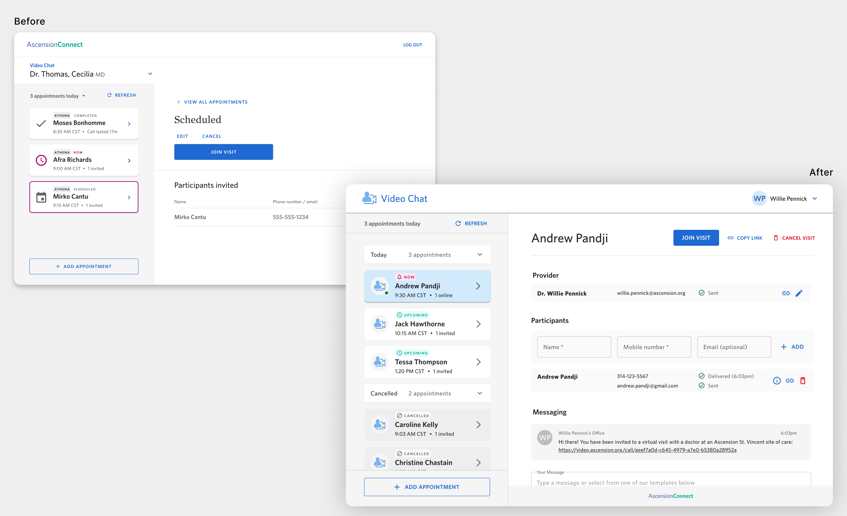

It was important that we did not lose what people loved about it — Video Chat's lightweight nature. We focused on reducing the number of clicks to get to key screens, as well as have more real-time activity feedback (i.e participants joining call, link unable to send)

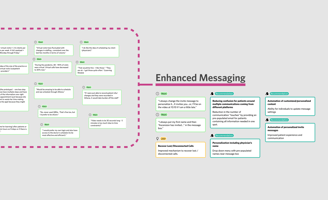
The process of co-designing feature level ideas involved collecting and documenting "Wants" based on conversations with the Jacksonville clinical staff.
Through affinity mapping, we then identified several user stories that we can focus on — and tying "Wants" with "Ideas" and "Recommendations" that came up organically or through workshops with our stakeholders.
The new design focused on empowering users with better appointment management capabilities while keeping simplicity intact.
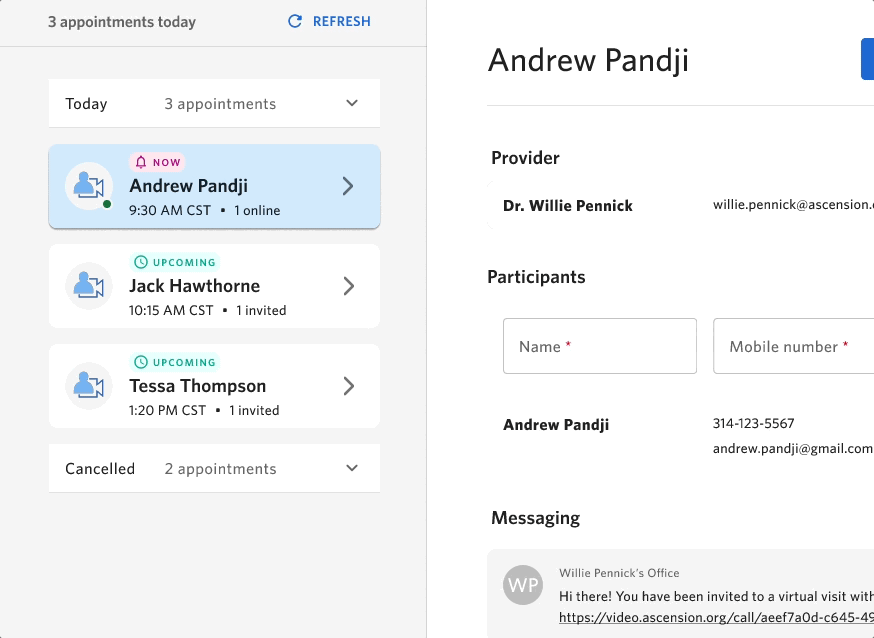

Creating and managing appointments
We redesigned indicator chips to focus more on appointment urgency (Now, Upcoming, Cancelled) instead of appointment origination (Video Chat or Athena).
Users can easily see a provider's workload for today, and to immediately get to their management tools: joining visits, canceling visits, adding participants, sharing links and messaging.
Users really wanted a way to hide "Cancelled" appointments, but be able to open them up and to reschedule them during downtime.
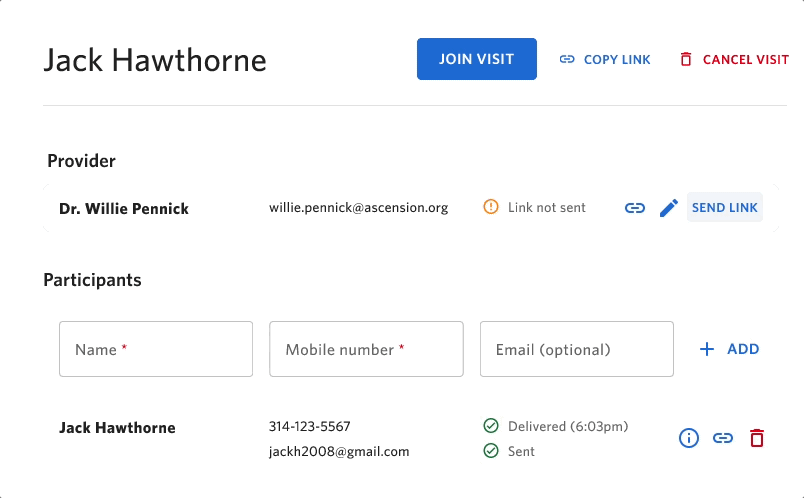

Sending a link to providers with reporting in mind
One challenge with the old design is the use of a single link to invite participants into a chat. Providers don't actually log in to Video Chat, and often times just uses a provided link sent to them via email or Athena Chat to join an ongoing session. This resulted in reporting issues.
By creating unique provider links specific to their email IDs, we improved our reporting capabilities so that we didn't have to guess that a provider joined the call. This became important since other users like MAs, RNs and interpreters
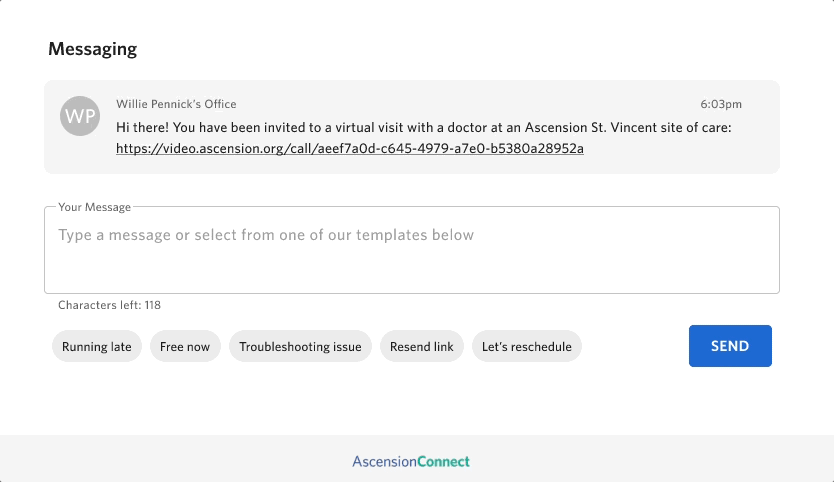

Sending messages to patients
We heard from users that they wanted more flexibility when it comes to sending messages to patients. We learned that users liked to personalize their messages but often times do not have time to type out entire messages.
We heard from one user that they had sticky notes that they could easily copy and paste templated messages into the app. We decided to design that in-app based on that learning.
In 2024, Video Chat was sunset in favor of telehealth solutions built into EHR systems in use. Regardless, it had an impact on patients' lives — especially during the COVID years.
1,090,072
Total visits on Video Chat across the System
(as of 8/2023)
55%
Adoption rate compared to other telehealth solutions across the System
(as of 8/2023)
4.79
Average Star Rating
(out of 5)
Crafted with ❤️ in St. Louis
© 2025 Andrew Pandji
All product names, trademarks and registered trademarks are the property of their respective owners. All company, product and service names used on this website are for identification purposes only. The use of these names, trademarks and brands does not imply endorsement.